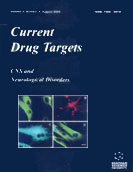Abstract
Hypoxia occurs when oxygen availability drops below the levels necessary to maintain normal rates of metabolism. Because of its high metabolic activity, the brain is highly sensitive to hypoxia. Severe or prolonged oxygen deprivation in the brain contributes to the damage associated with stroke and a variety of other neuronal disorders. Conversely, the extreme hypoxic environment found in the core of many brain tumors supports the growth of the tumor and the survival of tumor cells. Normal cells exposed to transient or moderate hypoxia are generally able to adapt to the hypoxic conditions largely through activation of the hypoxia-inducible transcription factor HIF. HIF-regulated genes encode proteins involved in energy metabolism, cell survival, erythropoiesis, angiogenesis, and vasomotor regulation. In many instances of hypoxia or hypoxia and ischemia, the induction of HIF target genes may be beneficial. When these same insults occur in tissues that are normally poorly vascularized, such as the retina and the core of solid tumors, induction of the same HIF target genes can promote disease. Major new insights into the molecular mechanisms that regulate the oxygen-sensitivity of HIF, and in the development of compounds with which to manipulate HIF activity, are forcing serious consideration of HIF as a therapeutic target for diverse CNS disorders associated with hypoxia.
Keywords: egln, hif prolyl hydroxylase, stroke, ischemia, cell survival, angiogenesis, transcription factor
 21
21

















